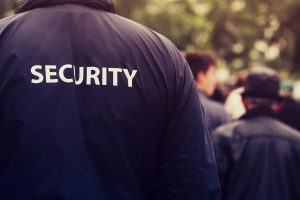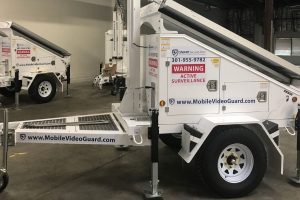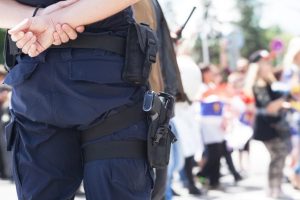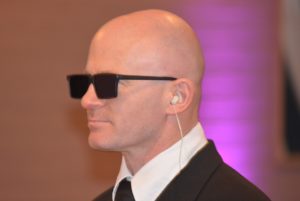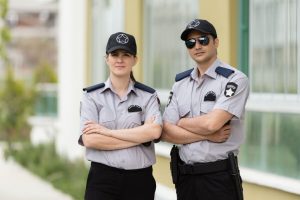Hiring a bodyguard or close protection agent is an act of trust. The client is trusting the agency and the assigned guard with their most valuable assets: their life, their family, and/or their wealth. No one wants to think about it, but the choice is one to take seriously. It’s easy for a close protection job to go wrong.
While it doesn’t happen very often, when it does, you’ll probably hear about it in the news. There’s a certain outrage that surrounds a security agent’s failure to protect the client.
Maybe this is because the objective seems so straightforward. “He had one job!” the public argues. And it’s true.
Executive protection agencies and individual executive or dignitary protection agents have one job: protecting the client.
Where it All Goes Wrong: Gray Areas in Close Protection
To be quite frank, the main reason for close protection failure is forgetting the goal. The goal is always to protect the client. And while that may seem straightforward, there are nuances. And these nuances most often show up when the job takes the client and agent into “gray areas.”
But the bottom line is this: protecting the client at all costs means there should be no gray area. Close protection operatives must be prepared to understand what it means to carry out the goal of “protecting the client” in any situation.
To give you an idea of what we mean, look at these examples of bodyguard failures. We’ll point out the “gray areas” that invite problematic guard behavior, the reason the “gray area” happened in the first place, and what the guard could have done differently to truly meet the goal of client safety.
1: The Client Gives Counter-Productive Directions.
Gray area number one is when the client wants to give their bodyguard directions which go against their own safety. This is a gray area because it can be a challenge for a personal protection agent to toe the line between courteous private security service and maintaining the professional directive.
Many times, being the bodyguard of a celebrity may mean doing things outside the scope of the job to maintain client satisfaction. But this should never be at the expense of client safety.
The reason this happens is that the client sees the bodyguard as an employee to have at their disposal, and the guard wants to perform in a way to keep the client happy.
The reason this is so dangerous is clients don’t always know what’s best for them. Client happiness does not always mean client safety.
This is perhaps the most critical factor in the Kim K. case in which millions of dollars in jewelry were stolen. She was alone in her room and robbed at gunpoint. Yet she had a bodyguard, so how did this happen?
Part of the problem is that her bodyguard was not present at the time of the theft. He was out guarding Kim’s sister and a friend – as he had been directed to do by the client.
Following client orders is a risky, and unprofessional move for a security guard. It’s the bodyguard’s job to maintain protection of the client at all costs. The reason professional security agents are hired is because they know more about safety and are better equipped. Taking orders from the client is just unprofessional.
2: The Situation Escalates to Use of Force
Another common gray area is when use of force enters the scene.
While applicable to executive protection services, this is a common thread in discussion of security guards. As in this instance, when guards employed at an entertainment venue retaliated against an aggressive fan with excessive physical force.
In this instance, the client is the venue and every person inside. This means it’s security’s job to first, de-escalate, and second, if de-escalation isn’t possible, either remove the threat or remove the surrounding clients from the threat. The protocol is almost never to respond to the threat with escalated force.
In executive protection, this gray area occurs when the client is endangered with violence. An armed security agent may respond by drawing a gun out of reflex from prior training or out of a misled instinct.
In protecting a client, “the goal is no use of force,” says Kent Moyer of World Protection Group. “[Some agents] want to destroy the bad guy,” he notes. “Our goal is, we don’t want to be in the same room as the bad guy.”
The fact of the matter is once a gun is in sight, the executive protection agent has already failed. The goal is to keep a client out of harm’s way, preventing potentially dangerous situations in the first place.
The most professional of executive protection officers will be able to predict potential threats and keep the client out of situations in which the use of force would be needed. While occasionally the rare instance will occur where firearms or force are needed, that should always be the rare exception, and never the rule.
3: Personal Protection Precludes Area Surveillance.
There was a news story a few years back when U.S. ambassador to South Korea, Mark Lippert, was slashed on the face and wrist by a man in the crowd.
There was an argument at the time that this was not, in fact, a failure on the part of the security services. (Details were not released on the type of security in place.) The argument stated “closer protection” would have “hindered the ambassador’s job.”
Our stance is that this is flat-out false. A good close protection officer is able to allow room for the client to fulfill job functions while monitoring surroundings for threats. Truly professional personal security can monitor a crowd closely enough to either avoid the client’s entrance into an unsafe area, or disarm the assailant and prevent bodily harm before it happens.
The gray area here is when close physical protection for politicians or other high-profile clients seemingly takes precedence over close surveillance of the client’s surroundings. This is especially difficult for dignitary protection or celebrity protection to navigate; the officer must prioritize close bodily safety while also maintaining secure surroundings.
This gray area can most often be avoided by simply having an adequate number of guards on duty. A security agency with real-world executive and dignitary protection training and experience know providing one agent is often not enough to do the job well.
This was also the case in the Kim Kardashian story we mentioned above: it was discovered after the fact that the room had several security issues:
- No closed-circuit television
- Broken/missing lock on the safe
- Malfunctioning intercom
While it’s impossible to know every detail of this failure, it seems apparent having more than one guard would have helped. With a close protection detail comprising multiple agents, the responsibilities of physically guarding the client and conducting risk assessment in surrounding areas can be completed without compromise.
Hire Experienced Armed Security Protection
Do you need professional armed guard services? Every armed guard we hire at SMART Security Pros has prior military or law enforcement experience, so you can feel confident that you are getting the absolute best protection. To speak to an armed security professional, contact us here.




